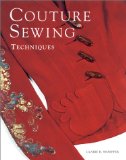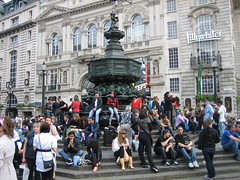
I took a semi-impulse trip to London in early May. I hadn't been over in ages but didn't think I would be able to make a trip until next year. The recession, however, has been a boon for travelers: I found a fabulous package deal in late March and decided to venture across the pond!
Naturally, I brought along some knitting, although I didn't actually carry it on the plane in either direction: I wanted to make sure I slept on the flight over, and they don't allow knitting needles in carry-on luggage when flying out of the U.K. But I figured I would pull out the needles while on the Tube, waiting in lines, relaxing in my room, etc. So I invested in circular needles suitable for the sock project I had designated for the trip and bundled up my cute little GoKnit pouch. I normally use double-pointed needles for socks, but they can be a bit of a hassle while knitting on-the-go (I've lost one or two at baseball games, much to my dismay).
Like any self-respecting knitter, I was determined to do a little shopping in some of the London's yarn shops! I did some research on Ravelry looking for recommendations and settled on two shops that would be easy to get to by Tube within zone 1 - turned out to be good choices since there wound up being partial shut-downs of the Tube over the weekend because of rail work.
My first stop was at
I Knit London in a neighborhood behind Waterloo station. Because of the aforementioned rail works, I had to get off at the Westminster Tube station and walk across Westminster Bridge. It was a gorgeous day - and a bank holiday weekend - so that meant that the bridge was
packed with visitors, vendors, and street performers. (How do the locals stand we tourists?) But once across the bridge, the crowds miraculously disappeared. The shop is located in Lower Marsh Street and was clearly a non-touristy area, despite its proximity to Big Ben et al. The cheery yellow sign was easy to spot:
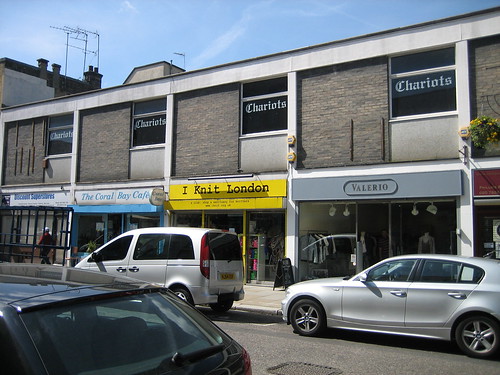
The shop itself has a fairly typical layout for the genre with square wall bins of yarn, some comfy seating, and an excellent selection of tools, books, and patterns. The yarn options were many and varied - including a number I had never seen before in both conventional and unconventional fibers (even a really cool plastic yarn in fun, bright colors). They didn't have a particularly large selection of cotton or cotton-blend yarn, but that is perhaps attributable to the cooler climate - as compared to Philadelphia, that is - which translates into a longer wearing season for wool.
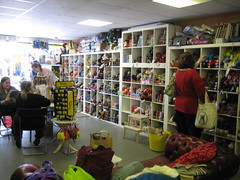
The shop advertises its selection of U.K. yarns, and I did hear a fellow Yank asking about them - not a huge range, but interesting. The shop assistant was very nice and helpful, and, after
much deliberation, I purchased two skeins of Malabrigo sock yarn (a sophisticated variegated green and an inky blue kettle-dyed) plus a set of square double-pointed needles from Kolláge that I'd been anxious to try.
Upon leaving I Knit, I walked up the street the opposite direction from which I had come and made a wonderfully serendipitous discovery of a pretty little park, Waterloo Millennium Green, where I sat amongst the flowers by an Asian-inspired bridge and stream to eat my lunch. Egg & cress sandwich - one of my favorites!
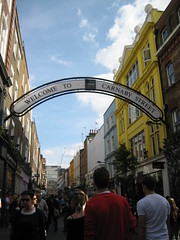
After an annoying trek around Waterloo Station, I made my way to my next target,
All The Fun Of The Fair in the Carnaby shopping district off Oxford Street. I really do not like Oxford on the weekends - it's just way too packed - but it was unavoidable. The Carnaby area is a pedestrian shopping zone of what appear to be converted factories and warehouses. There are courtyards of shops off the central spine of Carnaby Street, and the yarn shop was in Kingly Court, a charming spot with three levels.
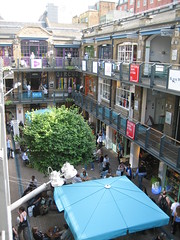
All The Fun is on the third level and is a tiny little nook of a shop. Their selection of yarns is small but thoughtful, and they have a truly unusual collection of whimsical buttons, charms, notions, and pre-made knit items - including amazingly realistic donuts, cakes, and biscuits rendered in yarn! As busy as the courtyard below was, the yarn shop was a relaxing oasis of soothing colors and natural light.
I browsed for quite a while and finally selected five skeins: one of a lace-weight merino silk from Grignasco in a pale aqua and four skeins of Patons' Linen Touch DK in two different colors (pale blue and natural). I plan a shawl with the Grignasco and several spa accessories with the Linen Touch.
And despite all the money I spent on yarn, I did show a small bit of restraint: I had stopped in Liberty at the corner of Great Marlborough and Carnaby Streets before heading to All The Fun Of The Fair and visited their fabric department. I somehow managed to not buy any of their gorgeous prints!
